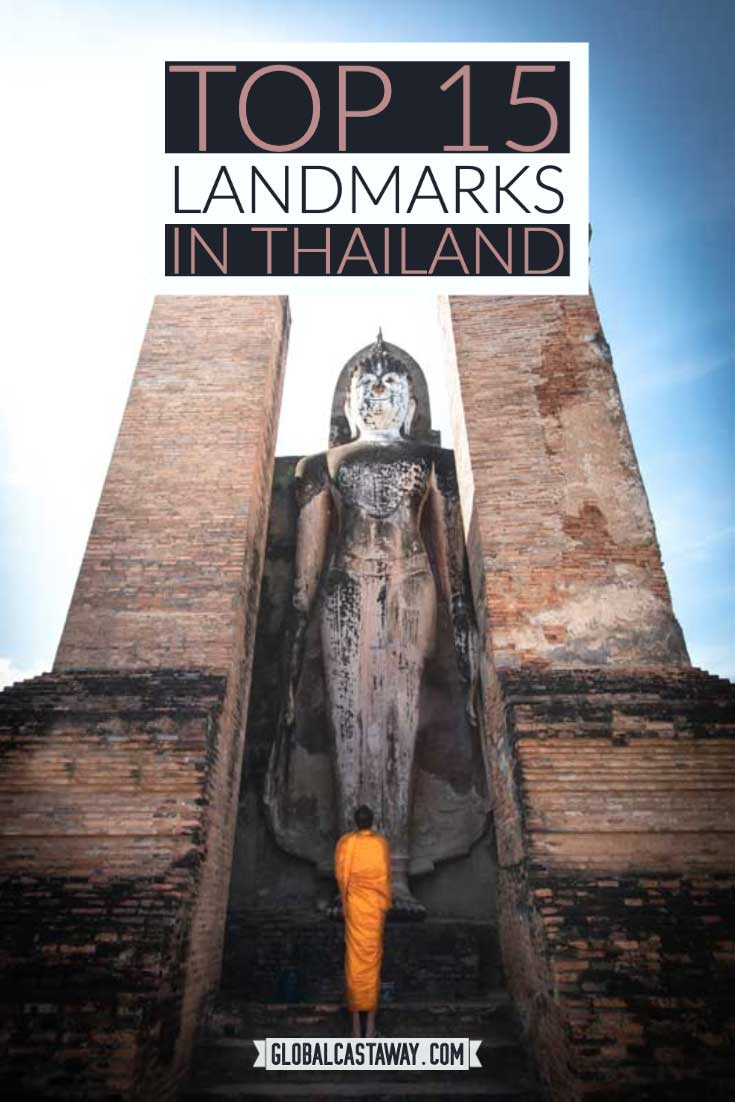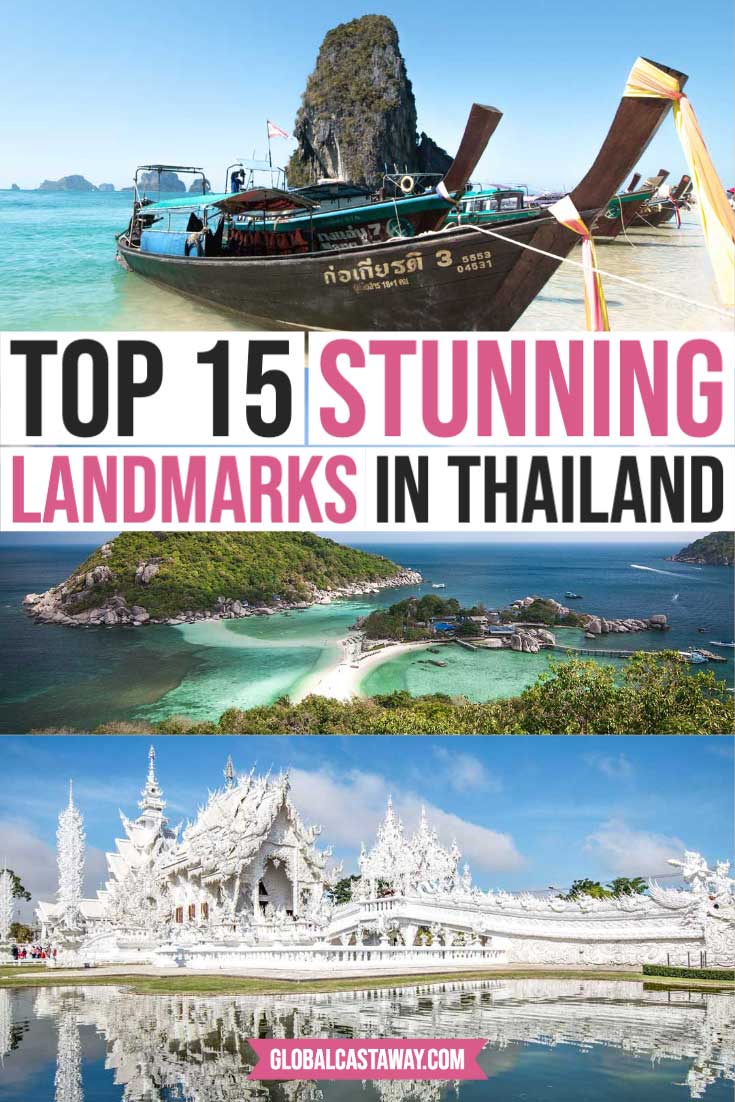Being the dominant tourist destination in the region, it’s reasonable to expect the top landmarks in Thailand to be on the next level. I’m happy to say they really are. From mystical ancient cities, through bizarre temples and jaw-dropping islands, Thailand’s landmarks are undoubtedly some of the most exciting sites in the world!
Cultural Thailand Landmarks
Theravada Buddhism is the main religion in the Land of Smiles. It draws influences from Hinduism and Animism, and it’s a central element in Thai culture. Being such a dominant presence in people’s lives, it’s not surprising that almost a third of the top landmarks in Thailand are connected to Buddhism.
Grand Palace, Bangkok
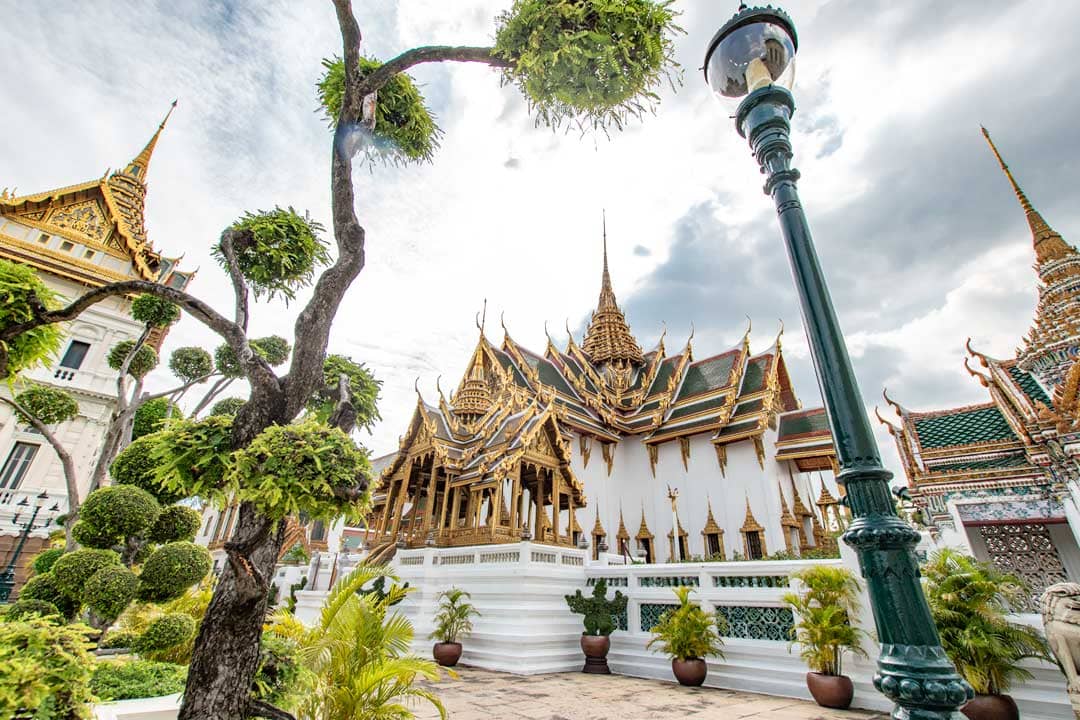
The Grand Palace is the most prominent Thailand Landmark. Located in Bangkok, the Grand Palace is a complex of opulent structures, most famous of which being Wat Phra Kaew – The Temple of Emerald Buddha.
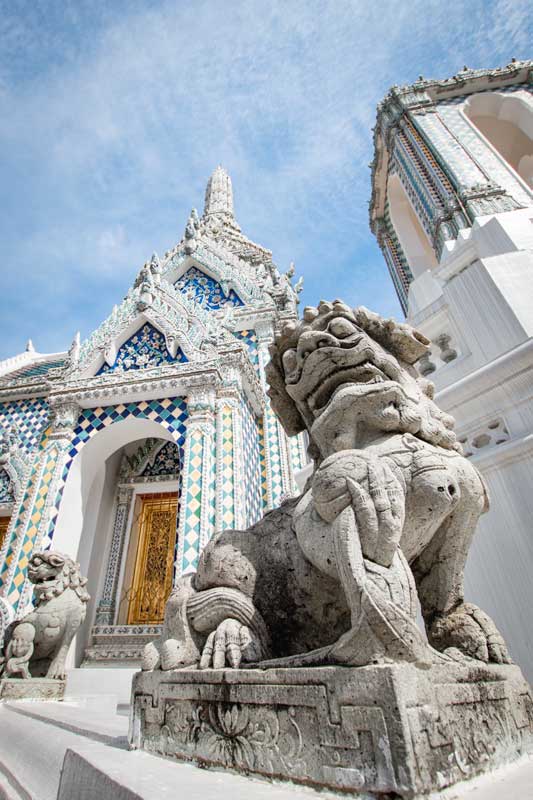
According to the legend, the emerald Buddha statue that resides in the temple originated in India, and it brings “prosperity and pre-eminence to each country in which it resides”. The figure is carved from a single jade stone, and it’s deeply revered in Thailand as a protector of the country.
Wat Arun, Bangkok
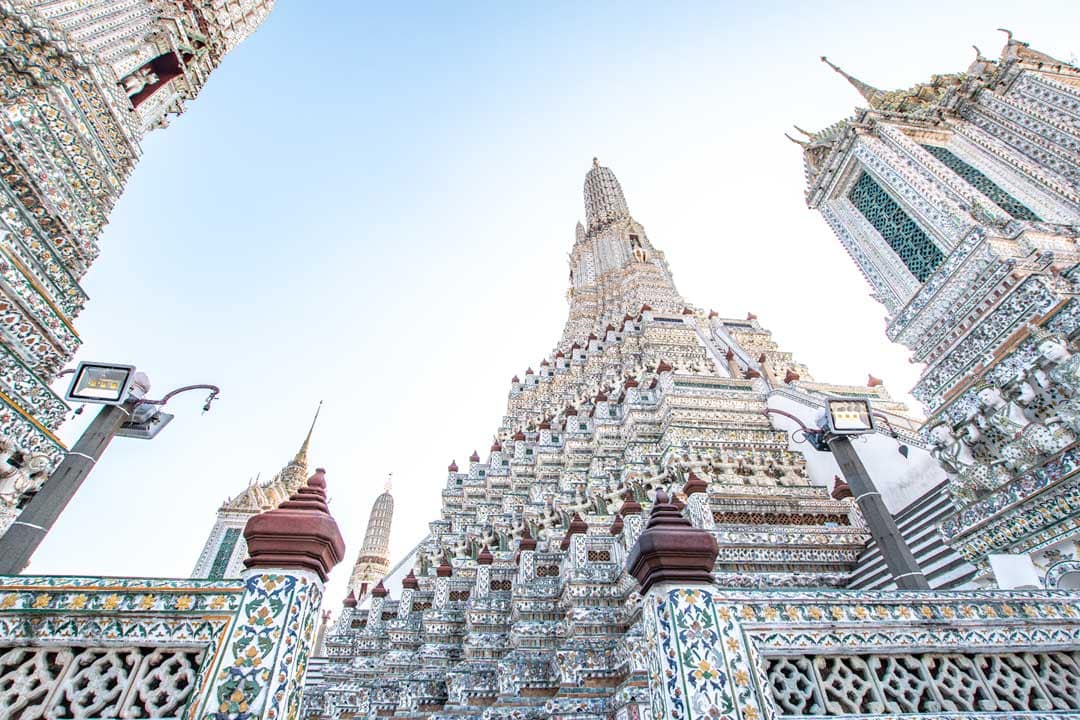
Wat Arun is known as the Temple of Dawn and the most beautiful and photogenic temple in Bangkok. Rocking a Khmer design with a monumental 70-meter-tall prang tower in the center, Wat Arun’s blinding-white walls are encrusted with colorful porcelain and refurbished continuously.
The temple is the go-to model of all Bangkok ads and undoubtedly one of the most significant landmarks in Thailand.
See Also: Best Temples in Bangkok
Damnoen Saduak Floating Market near Bangkok
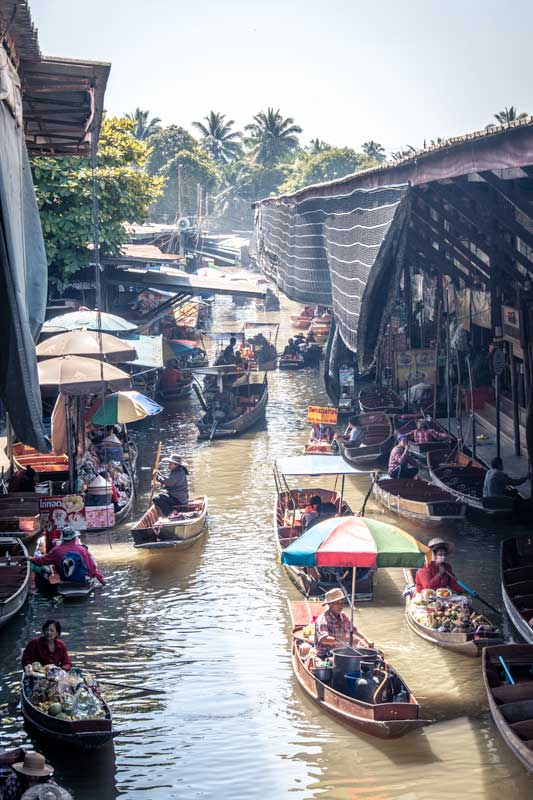
Floating markets are markets where goods are sold from boats instead of stalls. A traditional heritage in a dozen Asian countries, those peculiar markets came from a time when there were canals instead of streets, and the water transport was the dominant one.
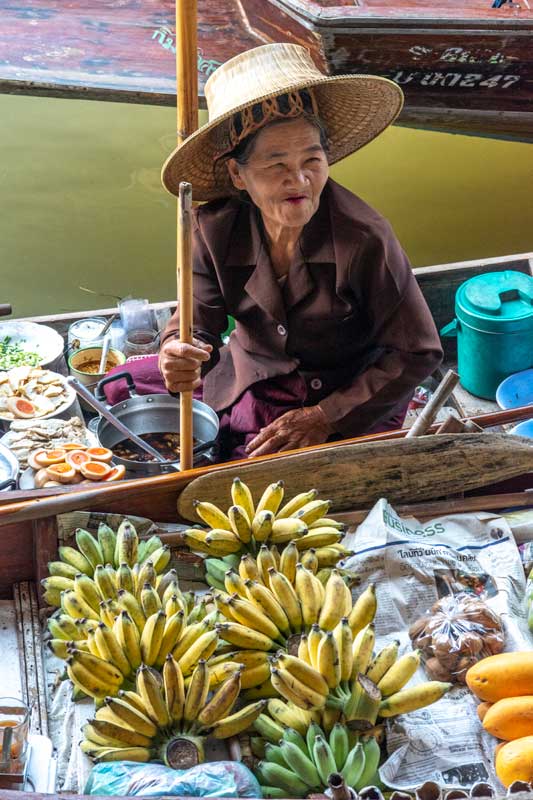
Damnoen Saduak has been the country’s best known floating market for a very long time. Its combination of colorful chaos, vibrant atmosphere, and exotic goods makes it one of the most popular Bangkok day-trips and a top Thailand landmark.
Castaway Fact
Damnoen Saduak was featured in the 1974 James Bond movie The Man with the Golden Gun.
Wat Prathat Doi Suthep, Chiang Mai
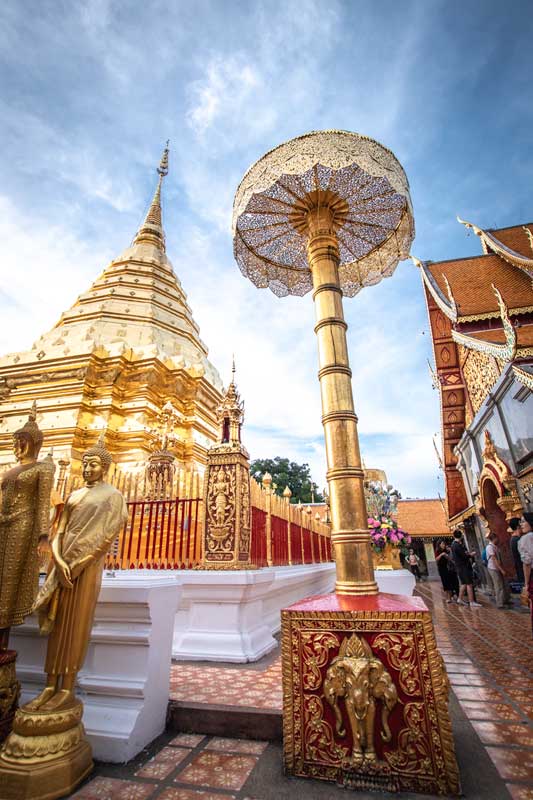
A gorgeous example of northern Thai architecture, Wat Phra That Doi Suthep is the most sacred temple in the region. Situated on top of the Doi Suthep mountain, you need to climb a 306-step stairway to reach the shrine. The stairway is one of the most popular features of the temple. The two nagas on its rails make it a favorite photo-spot for both locals and tourists alike.
Castaway Fact
The temple’s origin story says that a piece of Buddha’s shoulder was mounted on a sacred white elephant. The elephant climbed to the top of the Doi Suthep mountain, trumped three times, and passed away. The site where the elephant died is where the Doi Suthep temple was constructed.
Wat Rong Khun, Chiang Rai
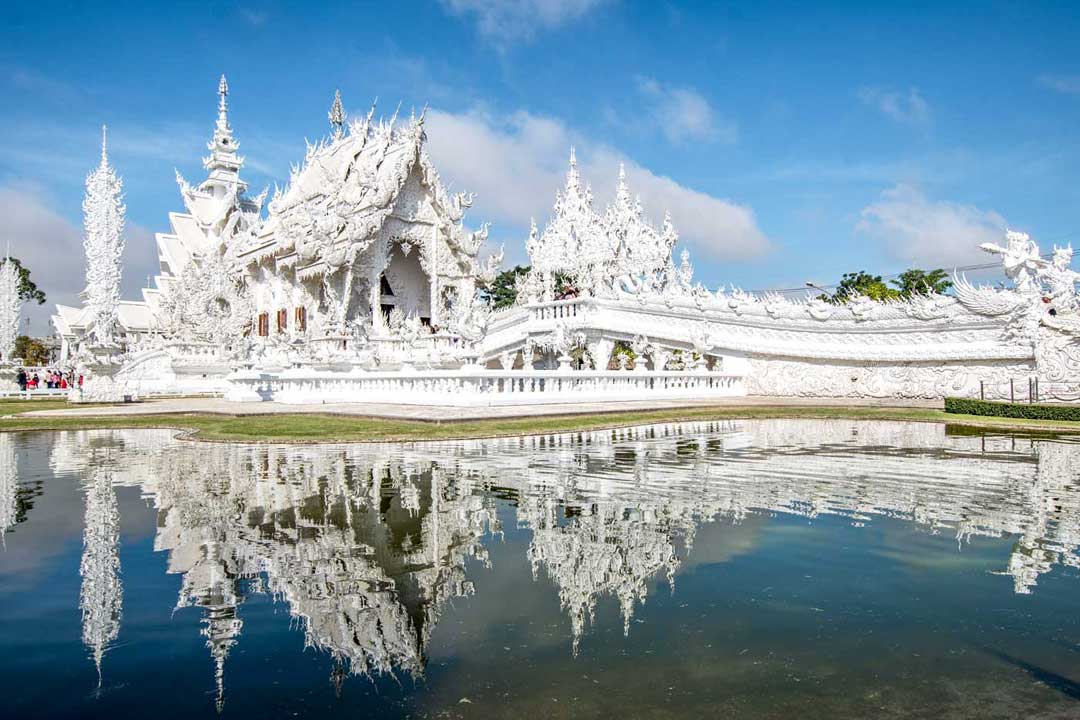
The first time I saw the White Temple of Chiang Rai, I couldn’t believe this place is real. Seriously just look at it! Resembling more of a winter wonderland castle than a temple, Wat Rong Khun is the brainchild of the Chiang Rai-born visual artist and painter Chalermchai Kositpipat, who have invested more than a million dollars into the sanctuary’s rebuild.
Don’t think, even for a minute, that the magnificent white exterior is the only stunning part here. Wat Rong Khun also has the most unique murals on the globe. By fusing classical religious symbols with modern idols (such as Superman and Pikachu), the artist tells the stories of Buddha’s life and teachings in a way you can’t see anywhere else.
Wat Rong Khun is truly a one-of-a-kind attraction and deserves to be the center of every Chiang Rai itnerary.
See Also: Best Landmarks in Asia
Sanctuary of Truth, Pattaya
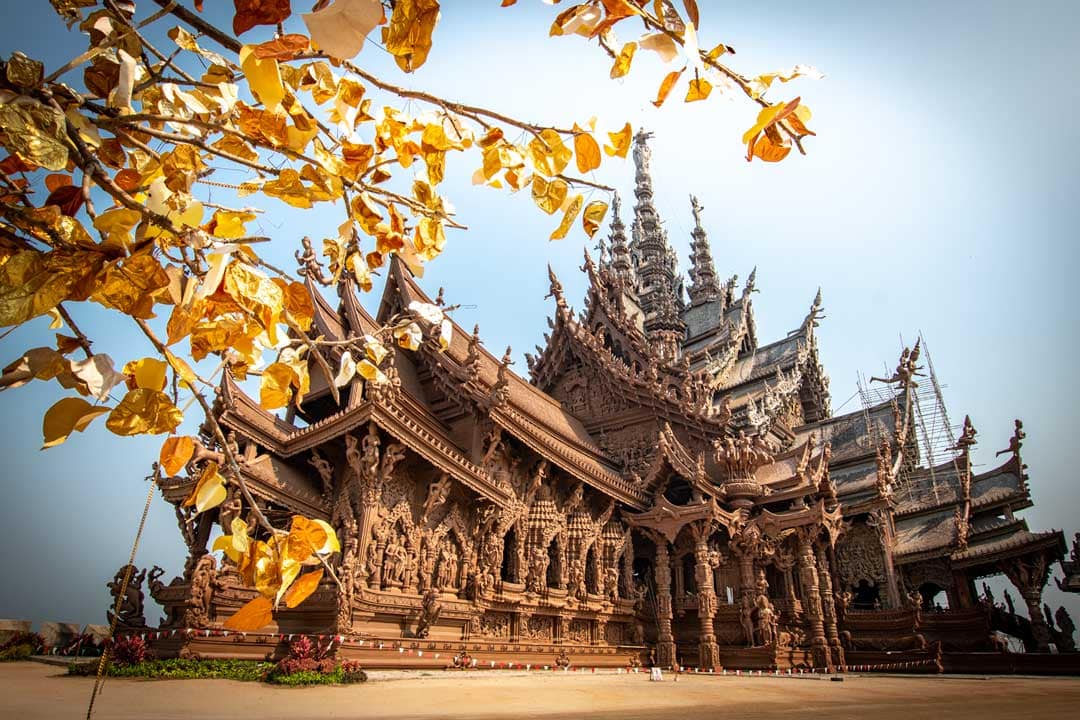
A humongous, elaborately crafted wooden temple situated on the beach – the Sanctuary of Truth combines the two most Thai-things (temples and beaches) to create one of the very best Thailand landmarks.
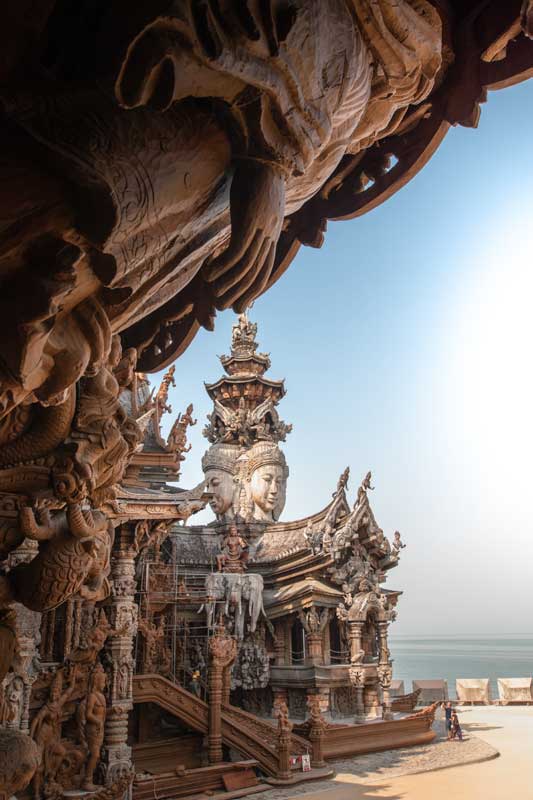
Built entirely out of wood (not even metal nails are used), the sanctuary was commissioned by the eccentric millionaire Lek Viriyaphan back in 1981, and it’s still being assembled to this day. It’s supposed to be finished around 2025, but I wouldn’t count on that. Don’t worry; you can still visit the temple and enjoy its beautiful ornaments and decorations. All you have to do is to wear a hardhat.
The Sanctuary of Truth is one of the most spectacular attractions in Southeast Asia and you should definitely check it out if you find yourself in Thailand.
See Also: Top 20 Landmarks in Vietnam
Historical Thailand Landmarks
With hundreds of years of history and no European colonization presence, Thailand managed to preserve plenty of its historical treasures. The three sites I picked represent all eras of Thai history from the early Sukhothai Kingdom up until the Second World War.
Sukhothai Historical Park, Sukhothai
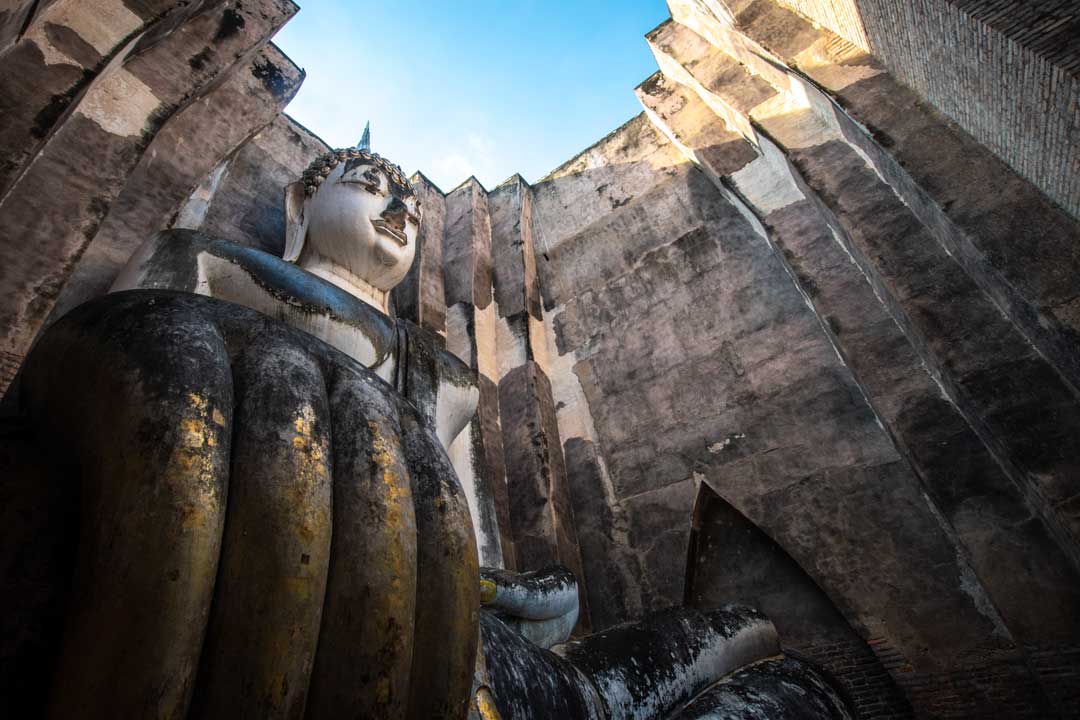
The Historic Town of Sukhothai is a UNESCO World Heritage Site since 1991. The ancient capital of the first Kingdom of Siam is located between Bangkok and Chiang Mai, and unlike the other classical Siam capital – Ayutthaya – is a bit of an off-beaten landmark. That’s some excellent news since the ancient town offers plenty of stunning ruins without the tourist masses that usually accompany them.

Sukhothai is believed to be the cradle of Thai civilization and the birthplace of modern Thai art, architecture, and language. The kingdom enjoyed 200 years of peace and prosperity before the neighboring Ayutthaya annexed it.
Castaway Fact
Sukhothai translates to ‘the dawn of happiness’.
Ayutthaya near Bangkok
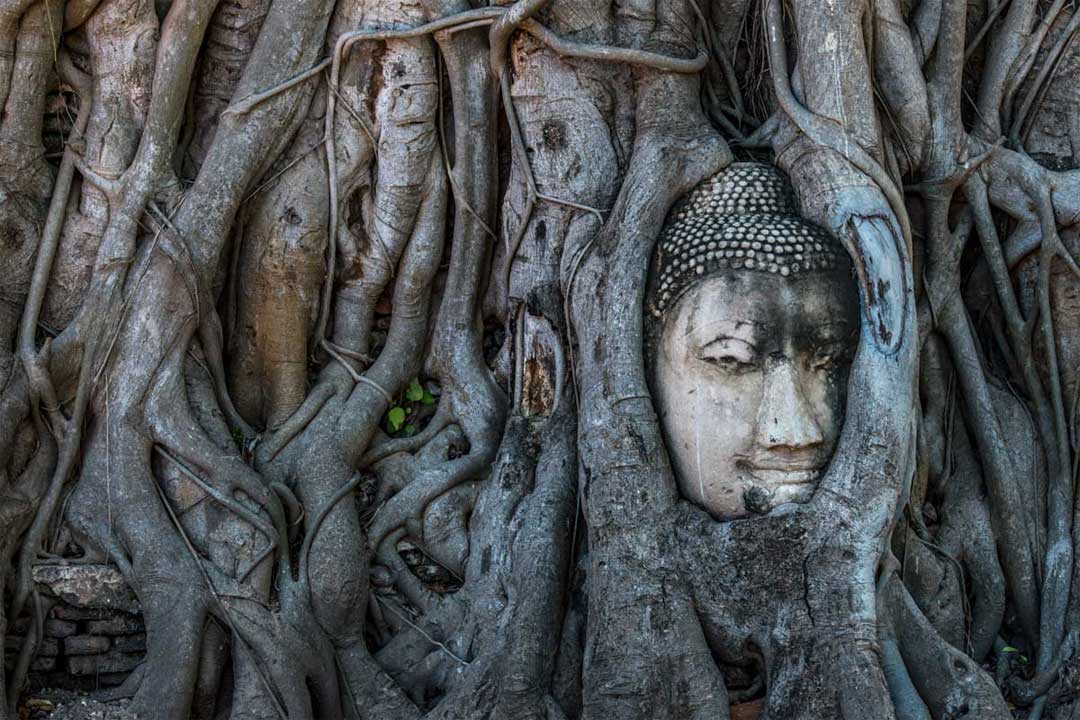
The Historic City of Ayutthaya was founded in 1350 and became the second Siamese capital after Sukhothai. For more than 400 years, the ancient city was a powerhouse in the region, trading not only with the nearby Chinese and Indians but also with major western civilizations such as Persians, English, Portuguese, French, and Spaniards.
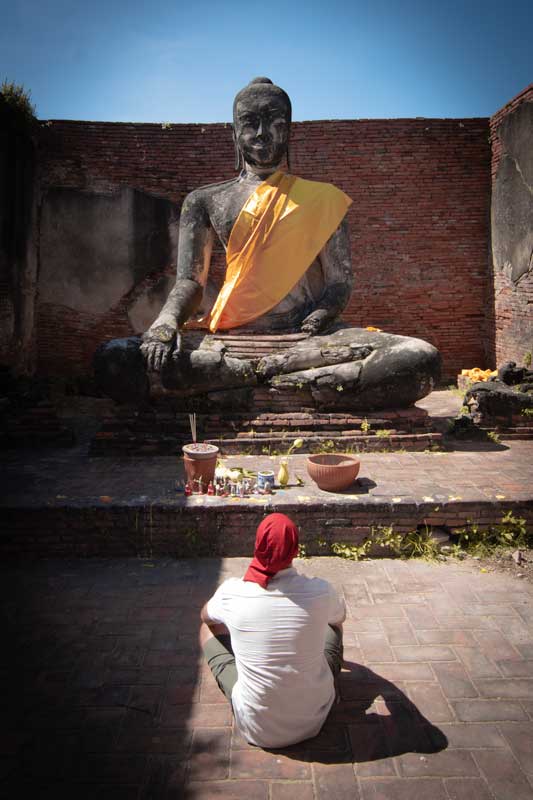
A UNESCO World Heritage site since 1991, today, Ayutthaya Historical Park offers well-preserved Siamese temples, monasteries, and palaces that give a good idea of its past splendor. If you are a fan of ancient structures and mystical civilizations, it’s the perfect place for you. Ayutthaya is one of the most prominent and easiest to reach landmarks in Thailand.
See Also: What NOT to do in Thailand
/
Bridge Over the River Kwai, Kanchanaburi
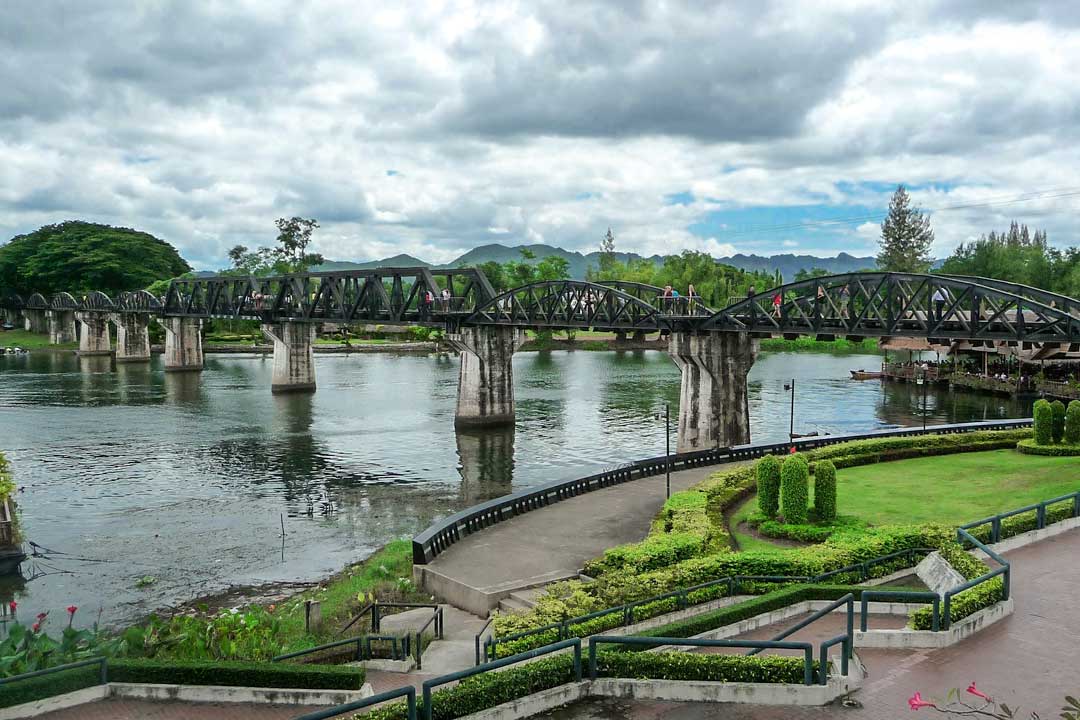
The bridge over the River Kwai (known as the Mekong River today) is one of the darkest Thailand landmarks. It’s a symbol of the Burma Railway, also known as the Death Railway. During the Second World War, between 180,000 and 250,000 Allied prisoners of war were forced to build the infamous route. About 102,000 of them died in the process.
Today the Bruma Railway is still active, but out of respect for the dead soldiers, the infamous Kwai bridge was closed for trains.
Natural Landmarks in Thailand
Thai culture and history are definitely enchanting, but we can’t talk about Thailand’s landmarks and miss out on the one-of-a-kind treasures of nature. From the most idyllic beach in the world to a ‘golden’ marine park, here are the most outstanding natural attractions in the land of smiles.
Railay Beach
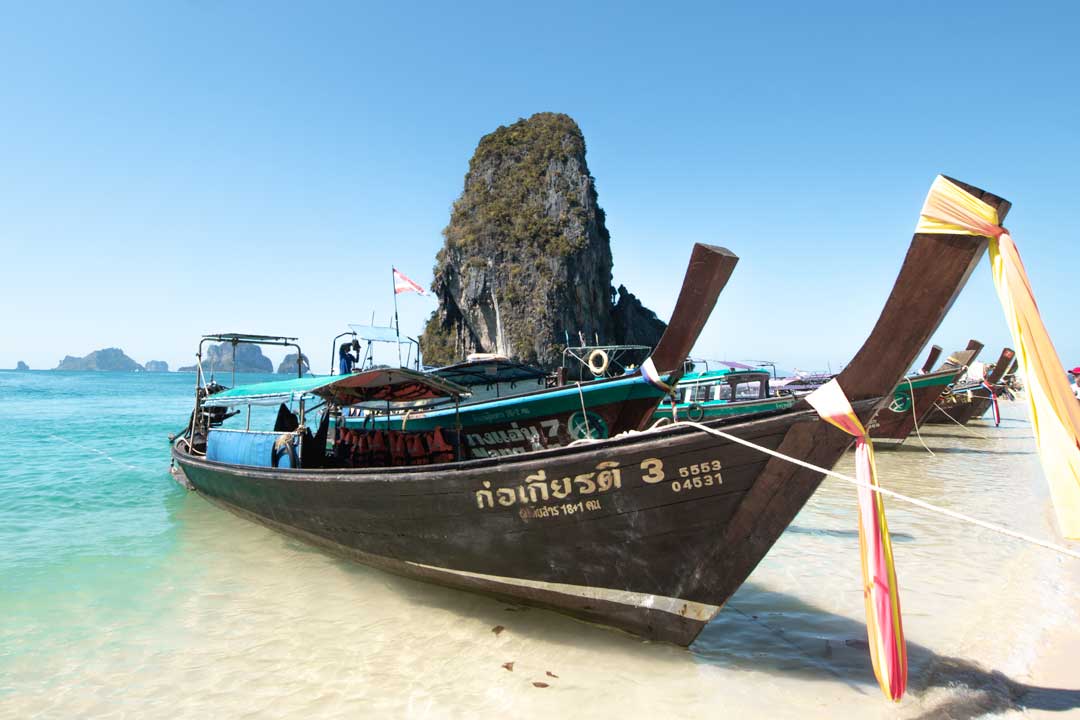
A tranquil peace of Eden, Railay Beach is actually a small peninsula with four beaches. Located in the Krabi region, even though it’s reachable only by boat, Being one of the most sought-after shores in the country there are plenty of things to do in Railey Beach. The adrenaline junkies can try rock climbing or cave exploring while the chill-brigade can sip a cocktail in one of the reggae bars enjoying the pinky Thai sunset. With no roads, no cars, and no hassle, Railay is the epitome of a lazy tropical vacation.
Maya Bay and the Phi Phi Islands
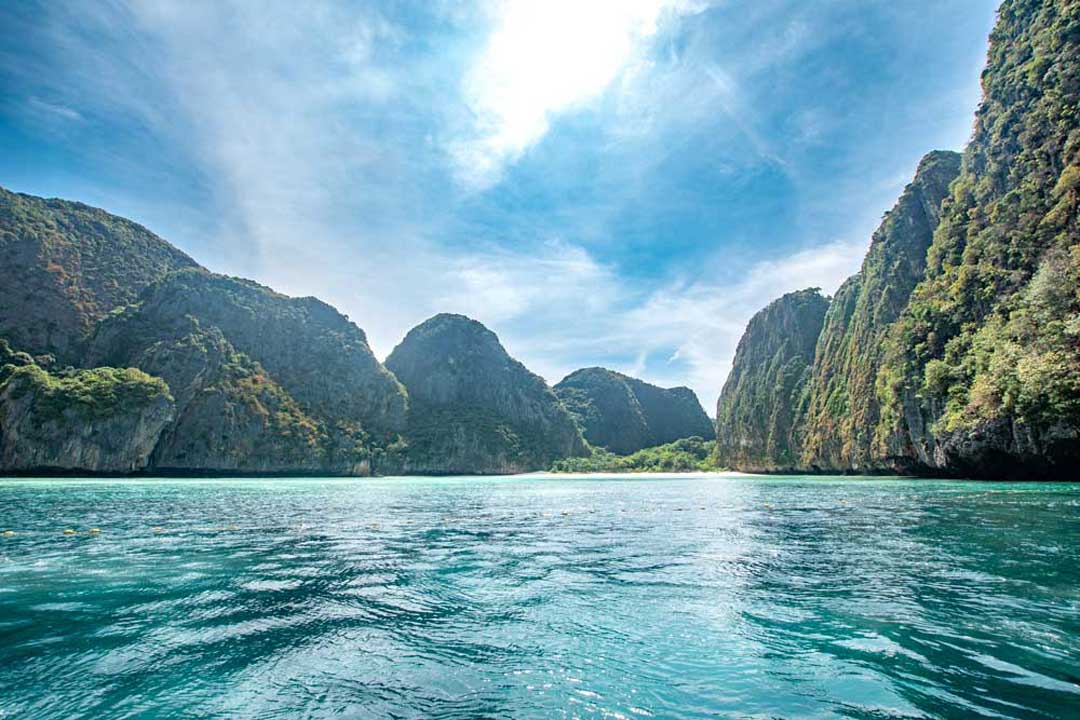
The Phi Phi islands are the most famous island couple in Thailand. And being the most popular island in a country that prides itself with thousands of beautiful islands is a worthy accomplishment.
The most famous beach in the most famous island is Maya Bay. How did it become so popular? It’s because Maya Bay magnificence reached Danny Boyle, who put Leonardo Di Caprio there and shot his legendary movie – The Beach.
Maya Bay gained so much fame that at a point, up to 5,000 tourists were visiting the lagoon daily. The crowds were overwhelming for the local ecosystem and killed most of the coral in the area, forcing the government to close the beach for two years. Maya Bay is open now, but the amount of tourists allowed to visit the beach is carefully managed.
See Also: How to Spend 10 Days in Thailand
James Bond Island, Phang Nga Bay
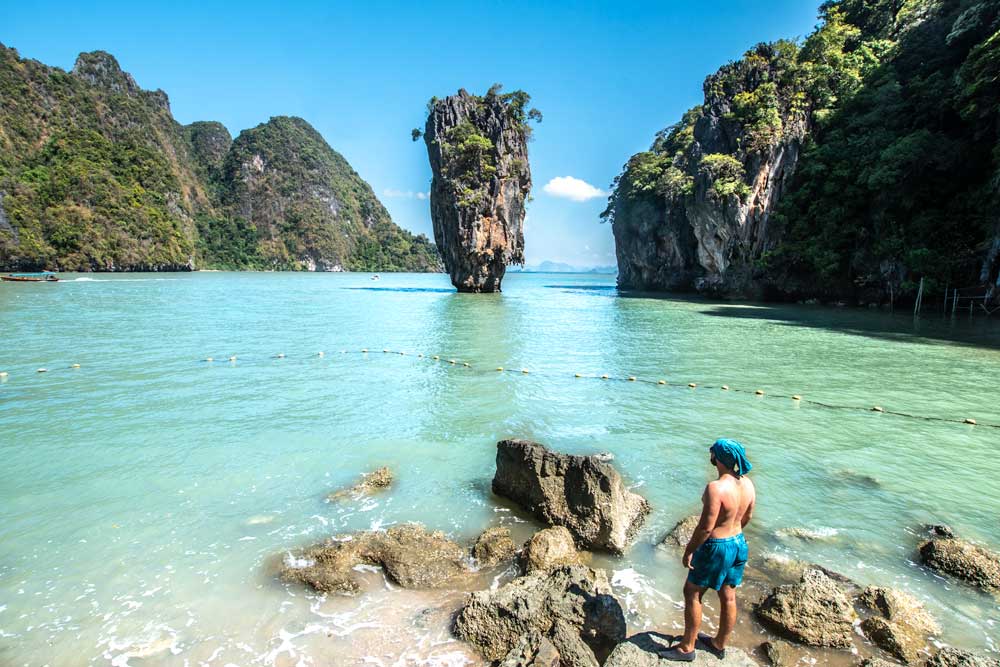
One of the most famous Thailand landmarks, the James Bond Island, is a popular day-trip destination from the nearby Phuket. Made famous by the 1974 movie The Man with the Golden Gun, the real name of the island is Khao Phing Kan.
The small island features a few caves and two sandy beaches, but its most prominent feature is the 20 meters-tall limestone rock rising from the water right in front of the island.
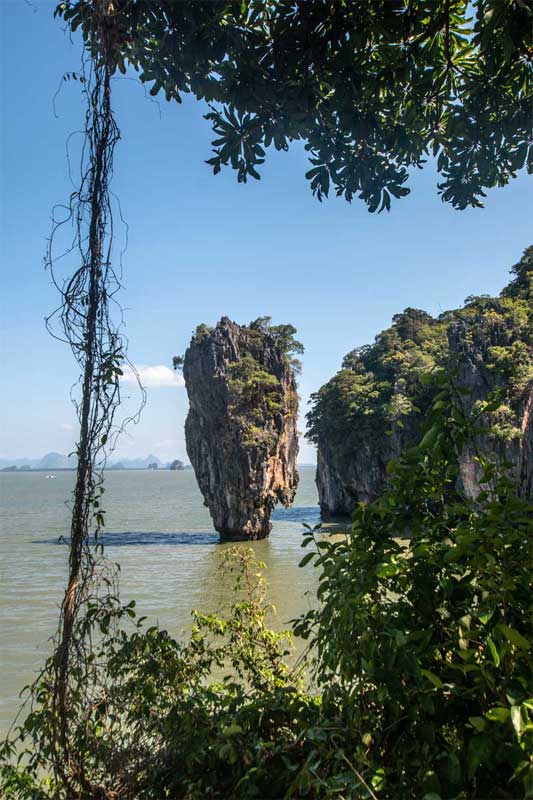
The legend says that a master-fisher used to sail in these waters, catching plenty of fish every time he cast his net. One day, however, he couldn’t catch anything but a nail. He kept on trowing his net again and again just to find the same darn nail. He got so angry that he took out his sword and cut the nail in half. One half of the nail jumped up and speared into the sea, creating the famous rock.
Doi Inthanon Mountain, Chiang Mai

I don’t want to leave you the impression that all natural attractions in Thailand are beaches, so here is something a little bit different.
Also known as “The Roof of Thailand”, Doi Inthanon Mountain is the tallest mountain in the Land of Smiles and one of the most popular national parks in the country. Located in the Chiang Mai province, the park is part of the Himalayan mountain range and rises up to a height of 2565 meters.
If you are into bird watching, trekking, waterfall chasing, or you simply want a break from the hot Thai weather, Doi Inthanon is the place for you.
See Also: Thailand in December
Koh Nang Yuan, Koh Tao
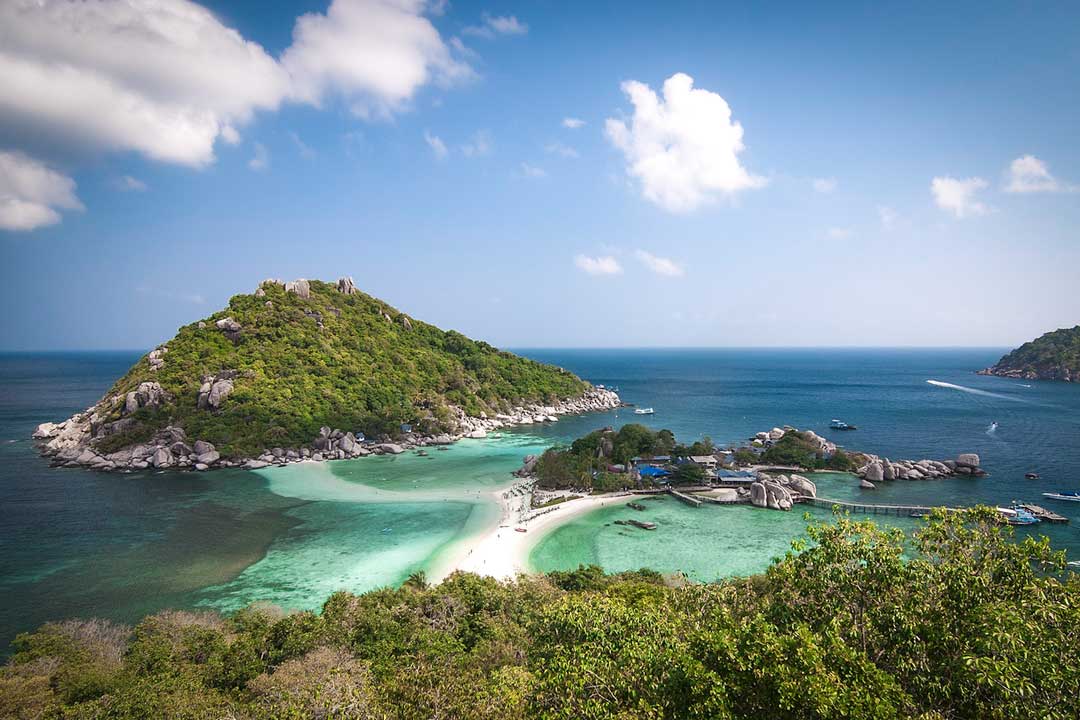
If you love diving, you’ve probably heard of Koh Tao. The small island is dotted by more than 70 diving shops, and it’s famous for being the second cheapest place in the world to get a diving license (only Honduras is more affordable).
Right next to this diving-Meca is situated Koh Nang Yuan – a picturesque tropical utopia that presents the perfect conditions to kick back between your dives. The tree teardrops of land, connected by wide sandbars, and surrounded by enchanting aquamarine waters, create one of the most exotic tropical landmarks in Thailand.
Ang Thong National Park
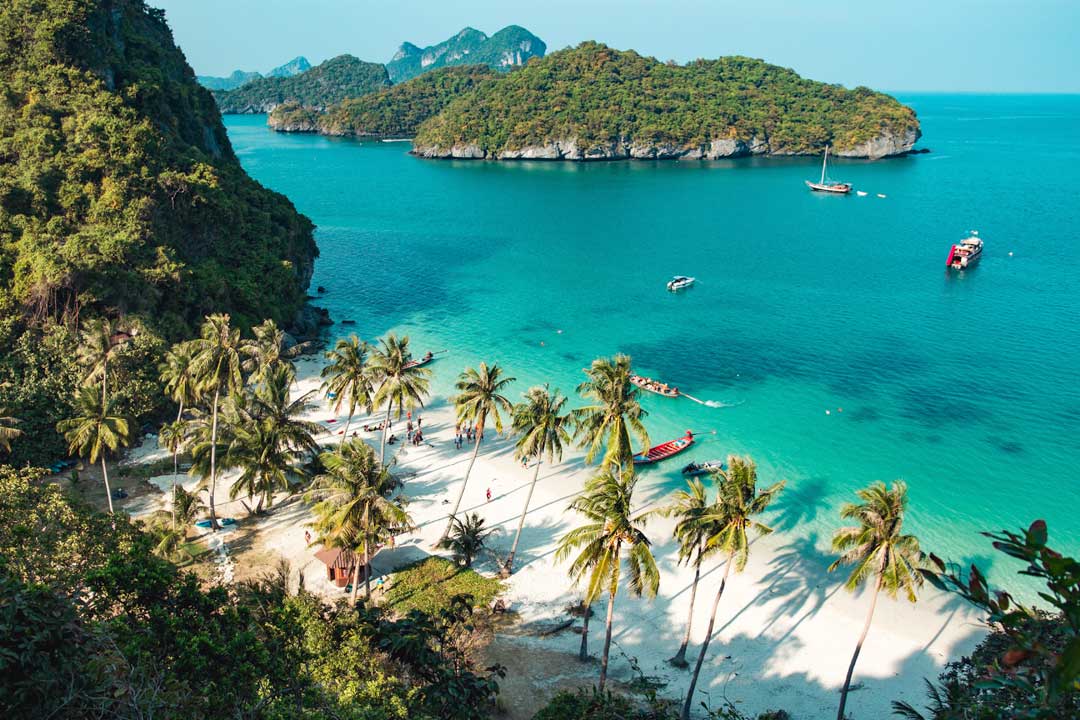
This national park may be last on the list, but it’s certainly not less exciting. Located in the Gulf of Thailand, this hidden gem of 42 pristine islands features countless of tropical beaches, magnetic waterfalls, emerald jungles, and fairy-tale photo spots.
If you ever find yourself in the park, make sure to check out the Bryde whale fossils and the jaw-dropping viewpoint on the Ko Wua Ta Lap island and the emerald lagoon on the Koh Mae Ko Island.
Castaway Fact
Ang Thong translates to ‘bowl of gold’.
That’s all from me, I hope you enjoy the best landmarks in Thailand!
————————————
If you haven’t planned your trip there yet, find out how I plan my trips!
————————————
I have 32 bucket list ideas for Thailand. See my impossible bucket list of 1700+ adventures!
Is Thailand on your bucket list?
Some of the above are affiliate links and I will earn a percentage of the sale if you purchase through them at no extra cost to you. This helps keep my site running – so thanks in advance for your support!

